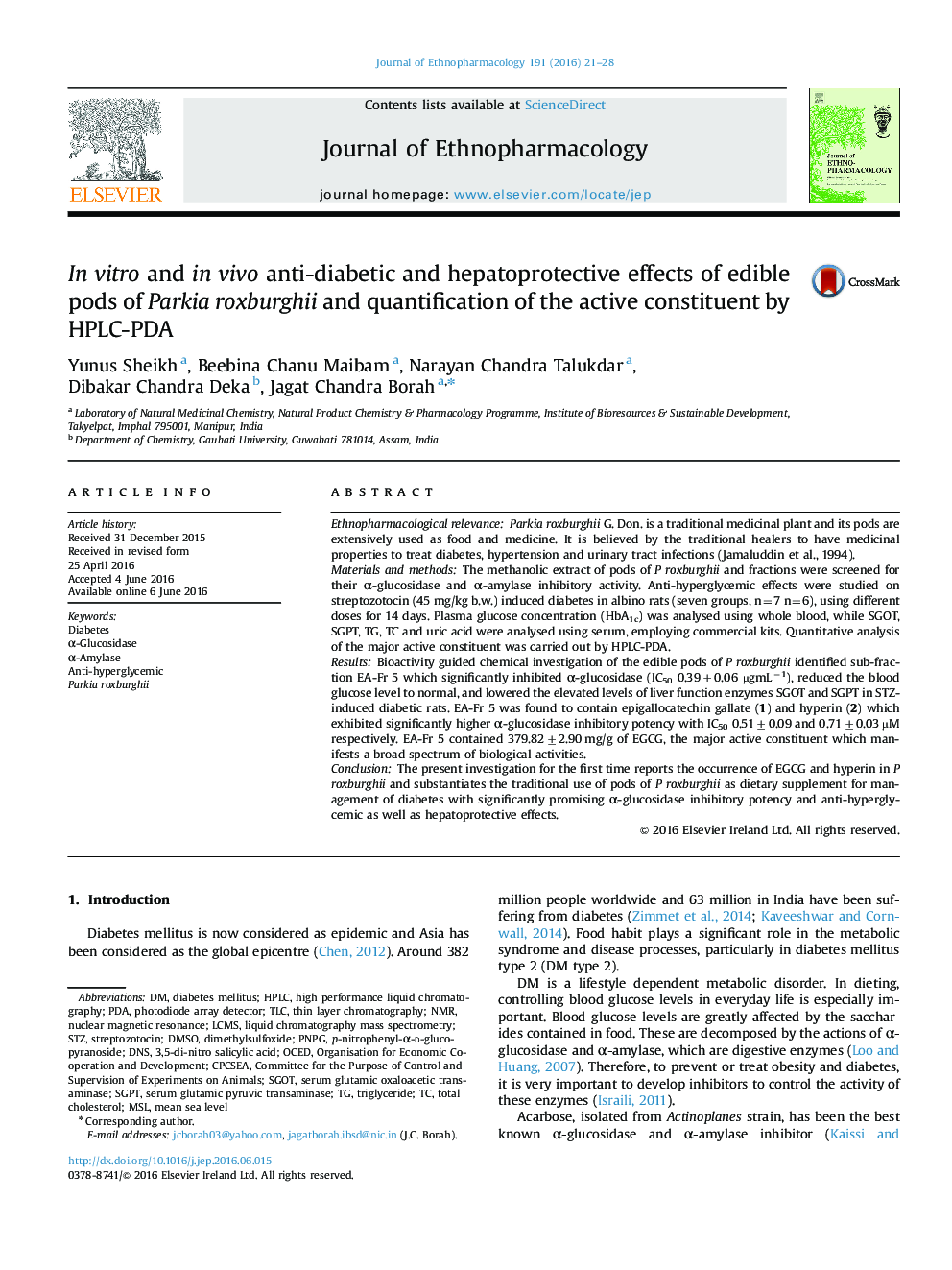| کد مقاله | کد نشریه | سال انتشار | مقاله انگلیسی | نسخه تمام متن |
|---|---|---|---|---|
| 2544571 | 1560371 | 2016 | 8 صفحه PDF | دانلود رایگان |

Ethnopharmacological relevanceParkia roxburghii G. Don. is a traditional medicinal plant and its pods are extensively used as food and medicine. It is believed by the traditional healers to have medicinal properties to treat diabetes, hypertension and urinary tract infections (Jamaluddin et al., 1994).Materials and methodsThe methanolic extract of pods of P roxburghii and fractions were screened for their α-glucosidase and α-amylase inhibitory activity. Anti-hyperglycemic effects were studied on streptozotocin (45 mg/kg b.w.) induced diabetes in albino rats (seven groups, n=7 n=6), using different doses for 14 days. Plasma glucose concentration (HbA1c) was analysed using whole blood, while SGOT, SGPT, TG, TC and uric acid were analysed using serum, employing commercial kits. Quantitative analysis of the major active constituent was carried out by HPLC-PDA.ResultsBioactivity guided chemical investigation of the edible pods of P roxburghii identified sub-fraction EA-Fr 5 which significantly inhibited α-glucosidase (IC50 0.39±0.06 µgmL−1), reduced the blood glucose level to normal, and lowered the elevated levels of liver function enzymes SGOT and SGPT in STZ-induced diabetic rats. EA-Fr 5 was found to contain epigallocatechin gallate (1) and hyperin (2) which exhibited significantly higher α-glucosidase inhibitory potency with IC50 0.51±0.09 and 0.71±0.03 µM respectively. EA-Fr 5 contained 379.82±2.90 mg/g of EGCG, the major active constituent which manifests a broad spectrum of biological activities.ConclusionThe present investigation for the first time reports the occurrence of EGCG and hyperin in P roxburghii and substantiates the traditional use of pods of P roxburghii as dietary supplement for management of diabetes with significantly promising α-glucosidase inhibitory potency and anti-hyperglycemic as well as hepatoprotective effects.
Figure optionsDownload high-quality image (236 K)Download as PowerPoint slide
Journal: Journal of Ethnopharmacology - Volume 191, 15 September 2016, Pages 21–28